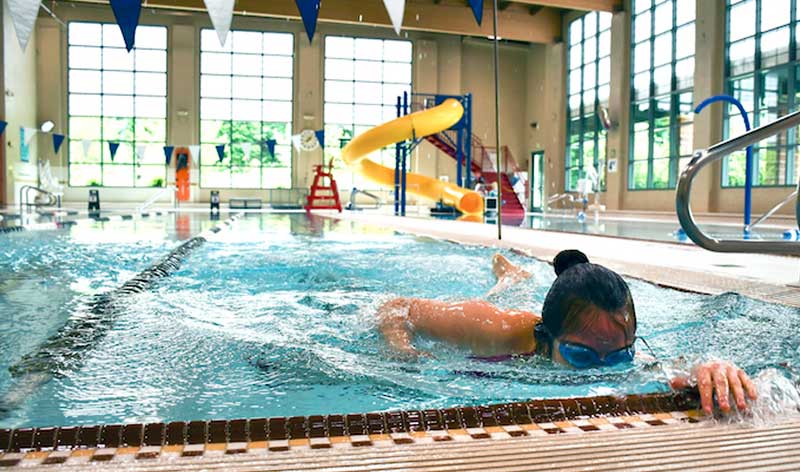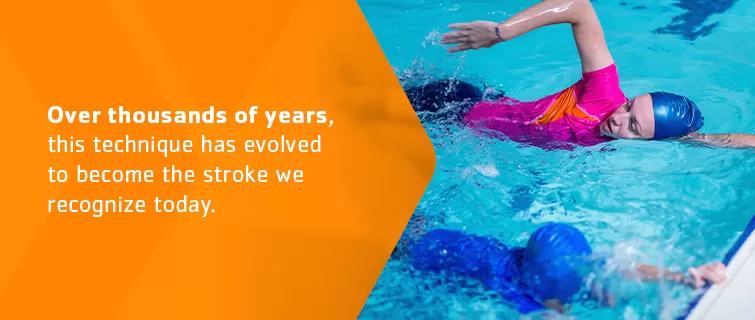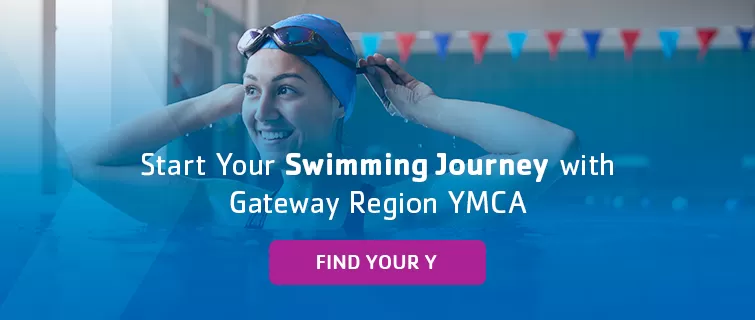
The freestyle swimming technique is the most widely used swimming stroke in the world. Often when many children start swimming, freestyle is the first swimming technique they learn. While this form is commonly used in competitive swimming, you can also see it in many other disciplines, including open water swimming, water polo and triathlons. If you want to learn how to swim, the freestyle stroke is the best way to start. Read on to get some freestyle swimming tips for beginners.
The History of the Freestyle Technique
It’s clear that the freestyle swimming technique is now the most popular stroke, but how did it get to be so widely used?
The front crawl, from which the freestyle's strokes originated from, has been traced back to ancient societies. The first depiction found of freestyle swimming is in Bas-relief artwork in an Egyptian tomb, dating back to 2000 B.C. Other ancient civilizations, including the Assyrians, Hittites and Minoans, also created artwork featuring the front crawl.
However, it wasn’t until 17th century England that the freestyle stroke became popularized in the Western world. Europeans saw this stroke in action for the first time at an 1844 London race. Since then, the freestyle swimming technique has grown in popularity all over the globe, eventually leading the style to its current position as the most widely used swimming stroke worldwide.
Important Elements of the Freestyle Technique
The freestyle stroke has been around for a long time. Over thousands of years, this technique has evolved to become the stroke we recognize today. What elements define the modern freestyle stroke? How does it differ from other forms? Below are the various characteristics that differentiate the freestyle swimming technique from other swimming strokes and several swimming technique tips for beginners learning how to do the freestyle stroke.
Head Position
When you perform the freestyle stroke, your head should be in line with the rest of your body, looking straight at the bottom of the pool. This form changes when you turn your head side to side to breathe, but, excluding those moments, your head should be in this position the entire time you're swimming.
Head and Body Alignment
In addition to your head, your body should follow a straight line. This level position will help you glide faster through the water.
Body Rotation
An essential swimming tip for carrying out the freestyle stroke is to rotate your shoulders and hips together. You should never be entirely on your side, however. One standard piece of advice for keeping this form is to keep one eye in the water and one eye out of the water when breathing. Doing so helps you make sure you aren’t fully rotating onto one side.
Breathing Head Position
Breathing techniques while swimming can be challenging to learn at first, but with practice, they will become easier. For freestyle swimming, it’s necessary to rotate the entire body along with your head. The freestyle stroke encourages you to move in one fluid motion to breathe effectively.
You should turn your head a bit further to the side than the rest of your body, take a deep breath to fill your lungs, then turn your entire body back to a flat position. Once your whole body is in line and both eyes are back in the water, exhale. It’s important not to lift your head while breathing — simply rotate your neck and head all the way to one side. If you lift your head, you will lose your form and your hips and legs will start to drop, slowing your pace.
Hands
When beginners first learn freestyle swimming, they often use inefficient forms to control their hands. Many swimmers try to propel themselves through the water by shaping their hands into a cup, with their fingers tightly pulled in. While this technique may seem like an effective way to propel yourself through the water, you will exert more energy without launching your body forward.
Instead, when swimming the freestyle stroke, you should bend your hands at the knuckles very slightly and spread your fingers apart enough to leave only about a centimeter of room between your fingertips. This technique will allow you to grasp more water and help you move forward more quickly without expending more energy.
Arm Position
Another crucial tip for mastering this swimming technique is to keep your arms in the correct position to propel yourself forward. Your elbows should always be in a high position, and you shouldn’t reach too far forward with your arms before bringing them through the water. This overextension will just make you tired in a shorter period. If done often or for long periods, it could cause shoulder tension.
Freestyle Kick
When you perform the freestyle stroke, your leg kicks are just as crucial as your arms are for propelling you through the water. Your kicks should be small, controlled and quick. Rather than focusing on the lower parts of your legs, the power for these kicks should come from your hips. Many beginners try to execute the freestyle stroke's kicking technique by bending their knees — Doing so will make your kicks less effective. Your legs should be straight, and your toes should always be pointed.
Splash Into a Gateway Region YMCA Pool Today
Swimming is one of the most popular and simple activities anyone can do. It’s also vital for wellness. Still, one of swimming's advantages is that beginners can learn without making a large investment. All this activity requires is your body - no heavy equipment to lug around! What's more, swimming has been proven to decrease stress, prevent pain and chronic illness, and improve overall quality of life, among other benefits.
Beyond all the ways swimming can improve our everyday lives, it’s essential for individuals of all ages to learn how to swim. With water all around us, you never know when circumstances may put someone's life in risk. Being able to swim may help you and your community prevent or resolve an emergency.
Ensure that you and your loved ones are prepared for summer fun and potential emergencies alike by learning how to swim. Gateway Region YMCA offers numerous swimming options for people of all ages. From group and private swim lessons to water fitness classes and lifeguard certification courses, the YMCA has something for everyone!
Contact the Y Today
Are you ready to start your swimming journey with the Gateway Region YMCA? Contact us today to learn more about our swimming programs and put these freestyle swimming techniques to the test.

